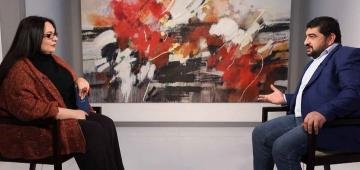 |
Theater, guest: Arman NavasardyanWhy was pathos devalued and what is its real meaning, what is the theater's message to the Armenian audience living through difficult post-war times, what emotions did the artist experience when he took the stage during the war? Marina Baghdagyulyan hosted actor Arman Navasardyan at the "Day 6" pavilion. |
 |
Red Ball
The music for the song “Red Ball” is by Vahe Hayrapetyan, accompanied by pianist Liana Torosyan.
The children, along with singer and songwriter Hasmik Baghdasaryan-Dolukhanyan, perform songs by contemporary Armenian composers, folk songs, and songs by Komitas. Hasmik Baghdasaryan-Dolukhanyan aims to popularize children’s songs by contemporary composers through children’s performances.
|
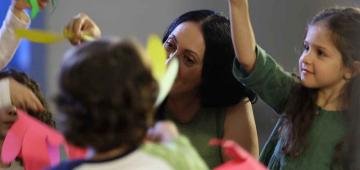 |
Day and Me
The music for the song “Day and Me” is by Argina Harutyunyan, accompanied by pianist Liana Torosyan. Puppeteer Aghasi Melkonyan, staging a small performance with the participation of children, makes the song more vivid and interesting.
The children, together with singer and songwriter Hasmik Baghdasaryan-Dolukhanyan, perform songs by contemporary Armenian composers, folk songs, and songs by Komitas. Hasmik Baghdasaryan-Dolukhanyan aims to popularize children’s songs by contemporary composers through children’s performances.
|
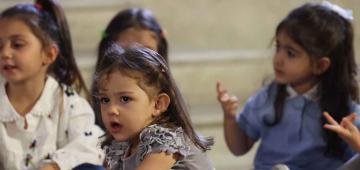 |
Five Ducks
Raffi Kavukian "Five Ducks", accompanied by pianist Liana Torosyan.
The children, along with singer and songwriter Hasmik Baghdasaryan-Dolukhanyan, perform songs by contemporary Armenian composers, folk songs, and songs by Komitas. Hasmik Baghdasaryan-Dolukhanyan aims to popularize children's songs by contemporary composers through children's performances.
|
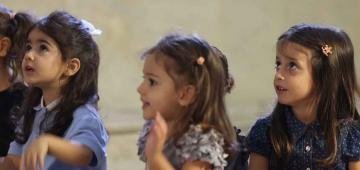 |
Zmpik zmpik
Folk song "Zmpik zmpik", accompanied by pianist Liana Torosyan.
The children, along with singer and songwriter Hasmik Baghdasaryan-Dolukhanyan, perform songs by contemporary Armenian composers, folk songs, and songs by Komitas. Hasmik Baghdasaryan-Dolukhanyan aims to popularize children's songs by contemporary composers through children's performances.
|
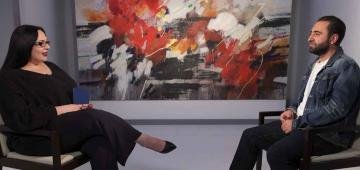 |
Jazz and FreedomHow was jazz created? Marina Baghdagyulyan discussed the creation of Armenian jazz, its uniqueness, the fate of the Artsakh State Jazz Orchestra, the musical process of jazz groups, jazz improvisation, and stereotypes of Armenian unity with Tigran Suchyan, the leader of the Artsakh State Jazz Orchestra. |
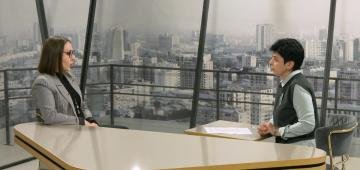 |
Selective Justice in Armenia: Lawyers' AlarmWhat is the fine line between justice and the punitive machine? How to distinguish the fact of being “selective”, especially when encountering restrictions on free speech? Why is the misuse of the expression “hybrid war” dangerous? Anna Sargsyan spoke with Hasmik Harutyunyan, an expert and lawyer from the NGO “Protection of Rights Without Borders”. |
 |
MilitariartAfter the First Artsakh War, a new direction in conceptual art was created: “militariart.” The founder of this direction was Alexander Melkonyan. What is “militariart?” Marina Baghdagyulyan’s guest is artist Mkrtich Tonoyan. |
 |
Rev. Fr. Astvatsatur Sargsyan
Since when has giving a new name to a baptized person been practiced in our church?
Is it possible to participate in the rite of confession remotely, via the Internet?
What sources suggest that a clergyman cannot perform the rite for a suicide?
Why is the grave of women dug deeper than that of men?
Where are the stone tablets with the 10 commandments now located? T. Astvatsatur priest Sargsyan answered the questions of viewers and users. Write your questions on the “Questions and Answers” Facebook page.
|
 |
Writer, playwright, painter and film director Aghasi AyvazyanIn the Pavilion: Literature and Art program, prose writer Hovhannes Yeranyan presents the high literary and artistic merits of the story "The Price of an Ordinary Man" by writer, playwright, painter, and film director Aghasi Ayvazyan. |
 |
Light Has OpenedThe music for the song "Light Has Opened" is by Argina Harutyunyan, accompanied by pianist Liana Torosyan. The children, together with singer and songwriter Hasmik Baghdasaryan-Dolukhanyan, perform songs by contemporary Armenian composers, folk songs, and songs by Komitas. Hasmik Baghdasaryan-Dolukhanyan aims to popularize children's songs by contemporary composers through children's performances. Puppet master Aghasi Melkonyan, by staging a small performance with the participation of children, makes the song more vivid and interesting. |
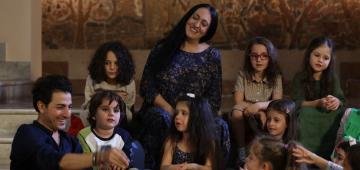 |
"Kele, kele"Komitas "Kele, kele", accompanied by pianist Liana Torosyan. The children, together with singer and songwriter Hasmik Baghdasaryan-Dolukhanyan, perform songs by contemporary Armenian composers, folk songs, and songs by Komitas. Hasmik Baghdasaryan-Dolukhanyan aims to popularize children's songs by contemporary composers through children's performances. Puppet master Aghasi Melkonyan, by staging a small performance with the participation of children, makes the song more vivid and interesting. |
